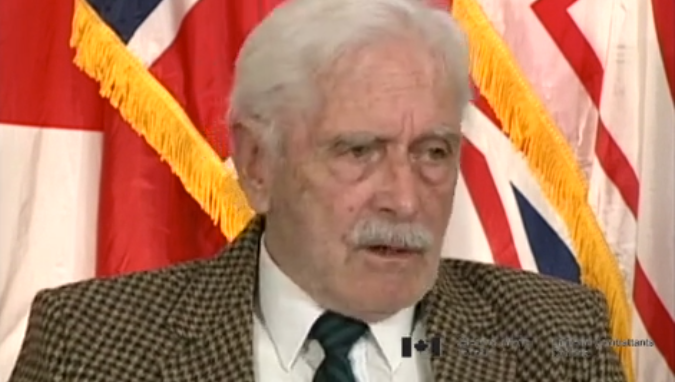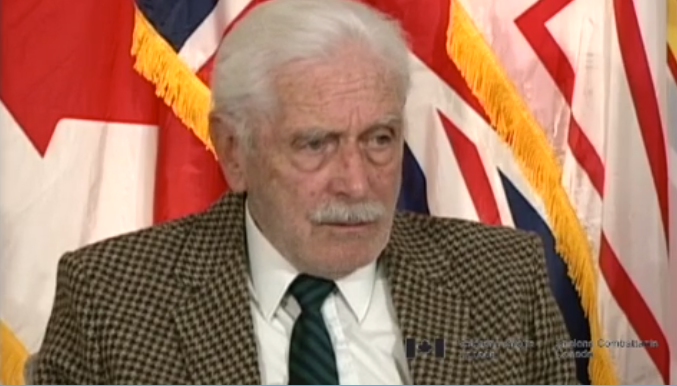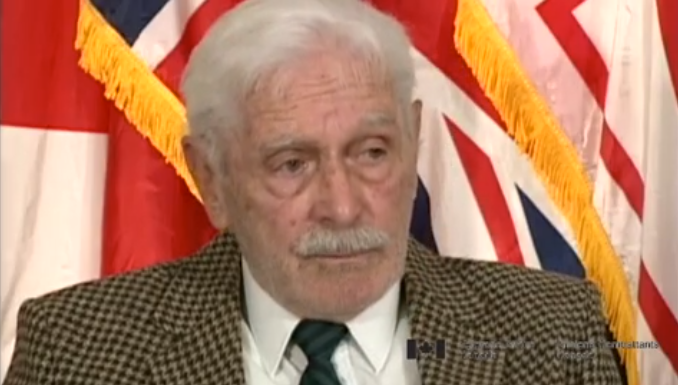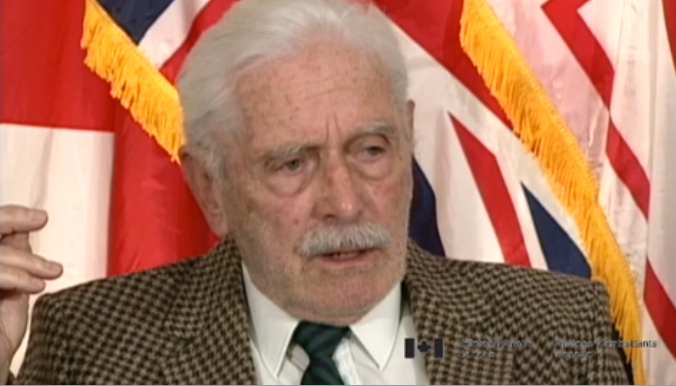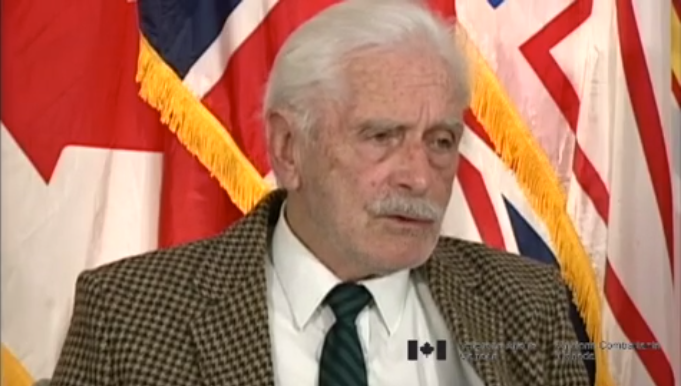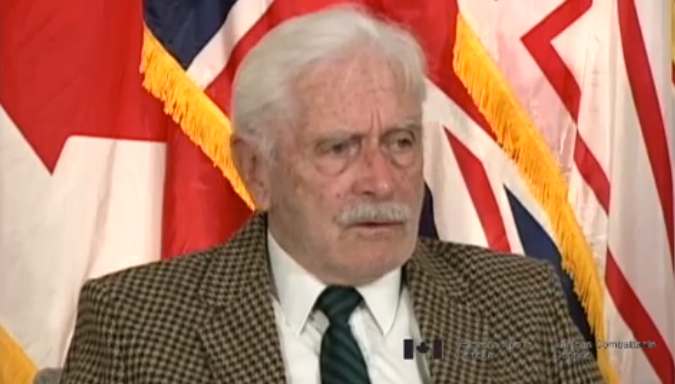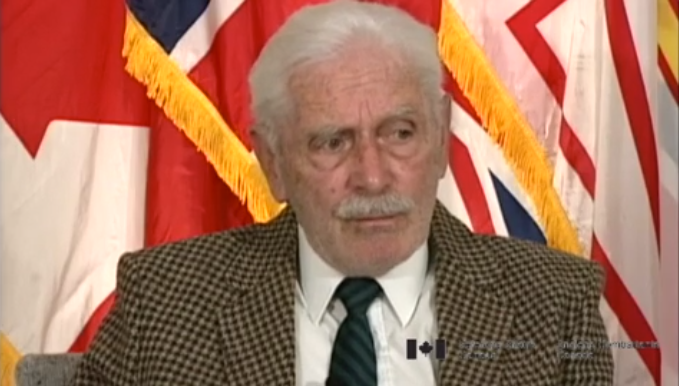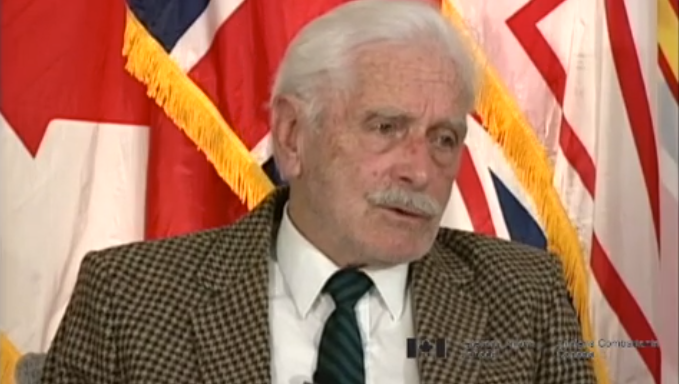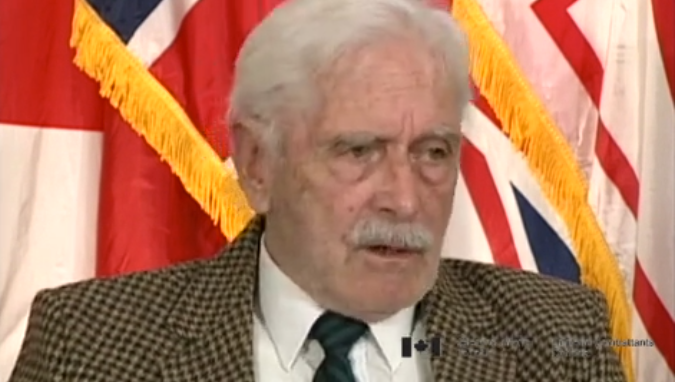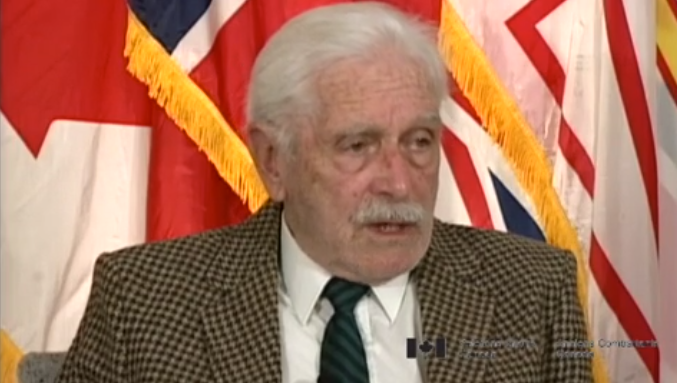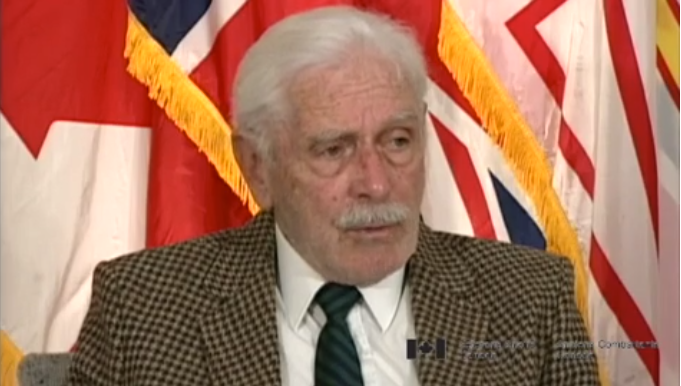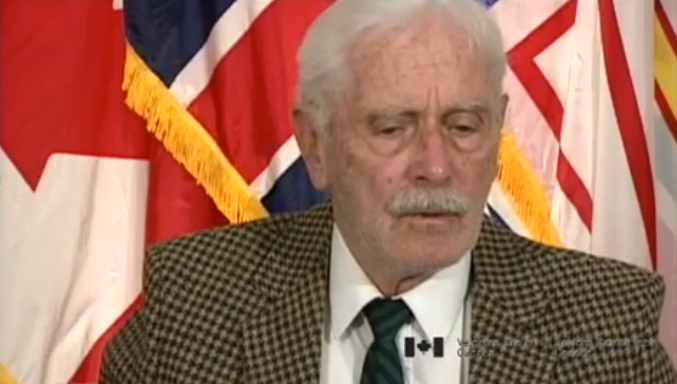Standby at El Alamein
Heroes Remember
Standby at El Alamein
We were ordered into the Mediterranean,
where we went, we went through the
Suez Canal at high speed.
We went through at a maximum of 15 knots
which was a no, no, because of the wash
that ships create. Nothing ever went
through there above four or five knots,
but we went through it flat out into
Alexandria and we stayed there for
several days and during that time,
this was the time of the battle of El Alamein.
Rommel was in charge, he was
driving the British before him east and
Montgomery decided he was going to
make a stand at El Alamein.
Now at El Alamein there's the Mediterranean.
There's about, I'll say 12 or 15 miles of desert
and then there's the Quatuor depression,
where cars, where things cannot go.
So Montgomery, he was going to make
the stand at El Alamein, and he did.
He had the guns, wheel to wheel to wheel
to wheel and he stopped the Germans there
and started to drive them back which he did,
until they drove him back to Tunisia and so on.
In the meantime we were in Alexandria,
and our purpose was to stand by in case
Rommel broke through at El Alamein and
if he did he was into Egypt and then he was
into where the oil fields are in Iran and
Iraq and these places.
If Rommel broke through, the engineers
were to blow the bridges, do all the damage
they could and come to our ship.
We'd take them off and scatter but
it didn't happen. Rommel stopped,
Montgomery stopped Rommel at El Alamein
and that was, that was the first battle
that was won in what I call our war and
from then on it was an ongoing thing.
Related Videos
- Date modified:



